Friday, December 14, 2007
Sunday, December 9, 2007
google search
fyi, i've added a google search at the bottom of our blog. it allows you to search the web or the three message boards listed. this should help as one of them has a tendency to not be search friendly ;o)
world's fastest
Check out this great presentation by Sheila Patek on the animal with the fastest prey capture mechanism in the world. thanks to nanoreef.co.uk where i found this great video
octo-squid?
A half octopus, half squid like animal was found off the cost of Hawaii's big island. It got stuck in a pipeline filter at 3,000ft deep. you can read more at boingboing.net


Friday, December 7, 2007
color & form
Monday, December 3, 2007
nano pics
saturday, we got hit with a little snow and had a short power outage...when the power came back on our tunze's starting shooting water out of the tank...the jerking motion from restarting cracked the C clamps that holds them in place. one of them is too cracked to work at all, so an MJ1200 is taking it's place. As for the other, it's zip-tied until a replacement can be had. waiting to hear back from roger@tunze, he's been great in the past. if it werent for his customer service i'm not sure i'd still be using the nano streams.
here's some new pictures of the nano reef. the a.horrida (chip's) , has turned a bright turquoise under the halide spots.
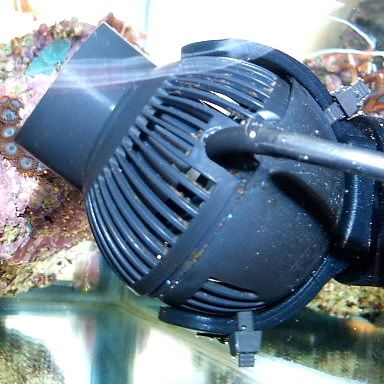
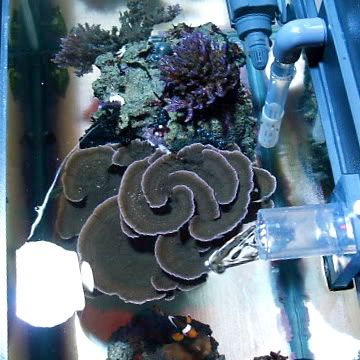
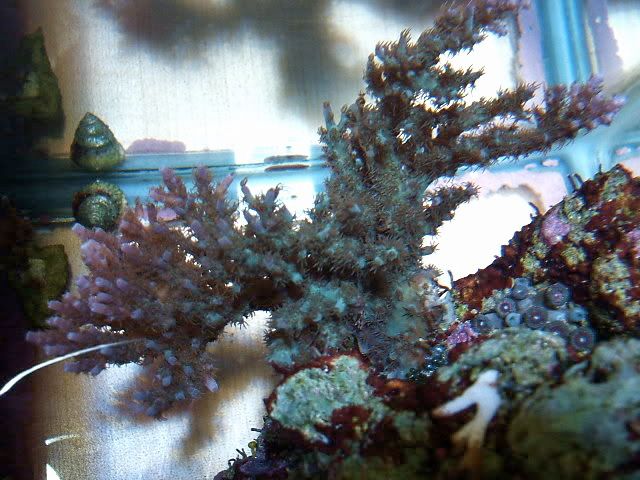
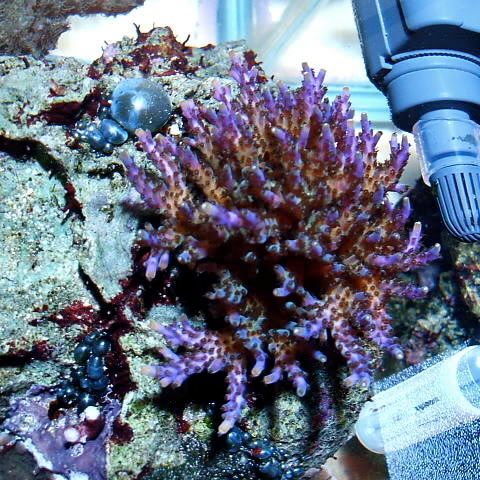
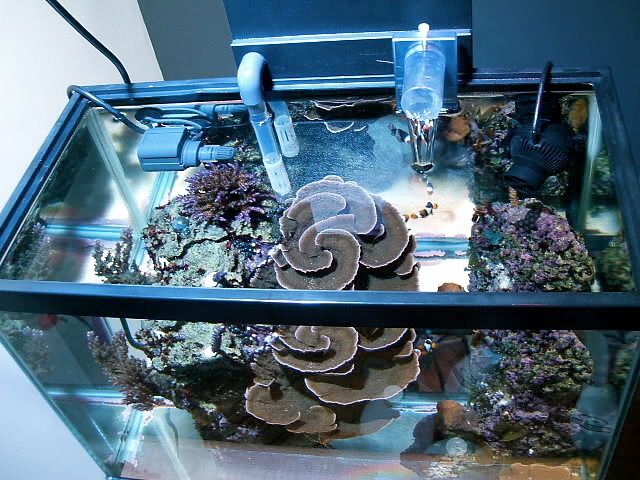
here's some new pictures of the nano reef. the a.horrida (chip's) , has turned a bright turquoise under the halide spots.





Friday, November 30, 2007
Saturday, November 24, 2007
stream loop
we've been intrigued lately at the use of closed loops and mj1000 "loops" used by many japanese reefers. it allows flow to be directed towards the coral (front to back) without actualy viewing the pump. the black triangle flow directors seem particularly popular.
becoming just as popular on many japanese reef blogs is the use of mj eco-mods. taking a normal maxi-jet power head and creating a propeller stream type pump. by doing this you are able to get 1600gph @ ~20watts. these kits are inexpensive and energy efficient, the problem though is they are large and unsightly. after some trials with our tunze 6025's i've found that the flow isnt significantly reduced by directing it via tubing. the wide dispersed flow is then channeled to a smaller stream, but it is still a powerful current and better than a typical powerhead.
possibly in our new tank we will use a mj1200 eco-mod kit hidden in the rock work. however, at the output we will use ABS pipe and channel the flow in different directions; this will help eliminate dead spots and be more energy efficient and less hassel than a closed loop. below is an image showing a reef with closed loop plumbing hidden withing the sand bed. i have also seen where powerheads are hidden and directed via plumbing under the sand bed so they are "invisible" to most users. a pic below shows the "triangle's" used.

becoming just as popular on many japanese reef blogs is the use of mj eco-mods. taking a normal maxi-jet power head and creating a propeller stream type pump. by doing this you are able to get 1600gph @ ~20watts. these kits are inexpensive and energy efficient, the problem though is they are large and unsightly. after some trials with our tunze 6025's i've found that the flow isnt significantly reduced by directing it via tubing. the wide dispersed flow is then channeled to a smaller stream, but it is still a powerful current and better than a typical powerhead.
possibly in our new tank we will use a mj1200 eco-mod kit hidden in the rock work. however, at the output we will use ABS pipe and channel the flow in different directions; this will help eliminate dead spots and be more energy efficient and less hassel than a closed loop. below is an image showing a reef with closed loop plumbing hidden withing the sand bed. i have also seen where powerheads are hidden and directed via plumbing under the sand bed so they are "invisible" to most users. a pic below shows the "triangle's" used.

Wednesday, November 21, 2007
lighting
with the new tank coming soon, we've been looking at more lighting options to supplement the halide spots. we stumbled across a few...what do you think?



for some eye candy click the link below for a great video!
aqua online angels video



for some eye candy click the link below for a great video!
Wednesday, November 14, 2007
Rhynchocinetes durbanensis, the cure?
Korallen Zucht was posted on their home site and forums the recent success had with Rhynchocinetes durbanensis, commonly known as camel shrimp, eating acropora eating flatworms and montipora eating snails. here is a quote from the site...
"Very annoying the small beasts! Acropora and Montipora are becoming pale, colorless and the tissue is getting thinner and thinner until it completely dies. Acropora flatworms and Monti snails are dangerous enemies for our corals!
As iodine bathing of the corals is rather time consuming, have to be repeated several times and are highly stressing the coral which is already damaged by the pest we tried something new: A cleaning station for the corals!
Within 30 to 60 minutes the shrimp Rhynchocinetes durbanensis cleans the corals completely in our separate shrimp tank. Acropora flatworms as well as their eggs and Montipora snails are eaten completely.
Caution: We recommend to keep the shrimp separately in another tank, because the shrimp will eat the coral tissue as well after all flatworms, eggs and snails are eaten. If the coral remains a whole day in the shrimp tank, the complete tissue also is munched! The coral hence should remain only 30 to 60 minutes in the cleaning station and then back into the coral tank."
"Very annoying the small beasts! Acropora and Montipora are becoming pale, colorless and the tissue is getting thinner and thinner until it completely dies. Acropora flatworms and Monti snails are dangerous enemies for our corals!
As iodine bathing of the corals is rather time consuming, have to be repeated several times and are highly stressing the coral which is already damaged by the pest we tried something new: A cleaning station for the corals!
Within 30 to 60 minutes the shrimp Rhynchocinetes durbanensis cleans the corals completely in our separate shrimp tank. Acropora flatworms as well as their eggs and Montipora snails are eaten completely.
Caution: We recommend to keep the shrimp separately in another tank, because the shrimp will eat the coral tissue as well after all flatworms, eggs and snails are eaten. If the coral remains a whole day in the shrimp tank, the complete tissue also is munched! The coral hence should remain only 30 to 60 minutes in the cleaning station and then back into the coral tank."
Subscribe to:
Posts (Atom)





